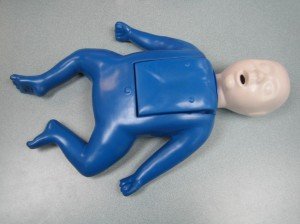Sudden infant death syndrome (SIDS) has affected millions of families every year. Even today, this condition is still considered as a mystery. The condition is described as the abrupt death of an infant below 1 year old that could not be clarified even after an autopsy and close investigation of the scene as well as history of the infant.
Even though the exact cause of SIDS is unknown, research has helped doctors to fully understand what happens when an infant dies from SIDS. It is important to note that SIDS is different from accidental death and suffocation.
When an infant dies of SIDS, high level of carbon dioxide and diminished oxygen saturation, acid build-up in the blood and heart dysfunction are responsible for causing the death of the child. The big question is why and how these issues occur.
Vulnerable infant

A vulnerable infant is at high risk for SIDS. Doctors believe that subtle defects in the areas of the brain that control breathing and arousal make an infant prone to SIDS. Take note that the regions of the brain that causes one to awaken or rouse when they begin to breathe in too much carbon dioxide appear to be faintly unusual among babies who died from the condition.
There are a number of factors that can make an infant prone to SIDS.
- Smoking during pregnancy can increase the risk of the baby from dying from SIDS. The environment also increases the risk.
- Toxins including alcohol, heroin, cocaine and methadone can put an infant at high risk.
- Premature birth or low birth weight such as those born before 37 weeks or weight less than 5 lbs. are at risk for SIDS.
- Issues during pregnancy such as placenta previa, early rupture of the membranes, placental abruptio and lack of prenatal care.
- Other factors such as young maternal age and black race can increase the risk of the infant for SIDS.
Outside stressors
In most cases of SIDS, being vulnerable with one or more of the risk factors mentioned did not cause SIDS on its own. Take note that the infants were also stressed in a certain way such as the following:
- Side or stomach sleeping. The ideal position for the infant to sleep is in his/her back. Infants who sleep on their stomachs might rebreathe their own air, thus giving them less fresh oxygen. Infants who sleep on their sides can easily roll onto their stomachs.
- Certain illnesses – Parents report that their infants were sick when they died from SIDS or recently recovered from common cold or other illnesses.
- Unsafe sleeping environment. The use of extra blankets, stuffed animals and crib bumpers reduce the amount of air the baby can breathe in. Even adult bedding is too soft for the infant and can also trap carbon dioxide.
- Overheating such as wearing heavy pajamas, staying in a warm room or using hats can lead to overheating. Infants who become overheated during sleep can have increased oxygen needs that stress out their systems.
Prevention
You can protect an infant from SIDS by reducing the risk factors and providing a safe sleeping environment. Proper prenatal care, positioning the infant on his/her back and using an uncluttered crib can help reduce the risk for SIDS.
